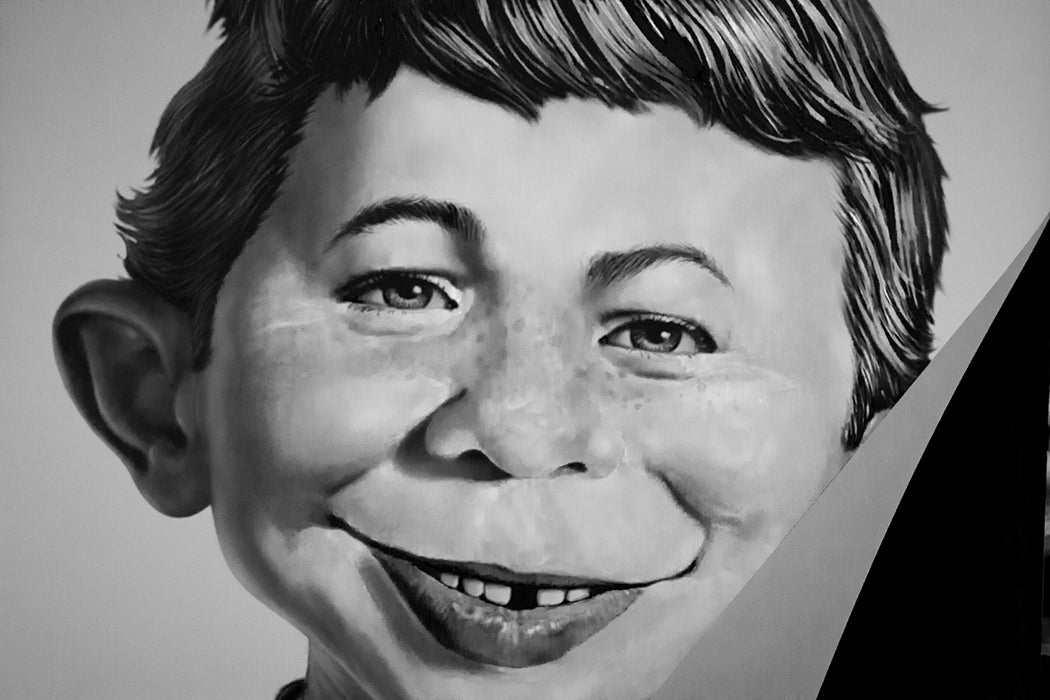When Tales Calculated to Drive You MAD—Humor in a Jugular Vein first appeared in 1952, it was like nothing ever seen before. The comic book parodied comic books, which were then under assault as purveyors of violence and degeneracy that contributed to delinquency, homosexuality, and, of course, the spread of communism. Mad made fun of all that, too.
Within three years, the publication became Mad Magazine, a name change that allowed it to flaunt the prohibitions of the Comics Code Authority. The CCA was an industry effort to tone down comics and hold state censorship at bay. Soon television, movies, advertising, and politics all joined comics as fodder for Mad’s mordant humor. Indeed, the takeaway of Mad was that all of the above were forms of advertising.
Nathan Abrams argues that Mad’s non-partisan critique of Cold War America had more effect than the more famous New York intellectuals working for Dissent, Commentary, and Partisan Review, even as they shared a similar Jewish New Yorker sensibility. (Woody Allen in Annie Hall: “I heard that Commentary and Dissent had merged and formed Dysentery.”) No icon was safe: Mickey Mouse, Khrushchev, Joe McCarthy, Superman, George Washington, Norman Rockwell, Madison Avenue, and psychoanalysis all become grist for the writers and artists working in the gap-toothed Alfred E. Neuman’s mill.
The magazine’s “refusal to conform led to attacks from its rivals in the New York Intellectual family,” writes Abrams. It was called tasteless, puerile, teenage, cynical, formulaic. One Dissent writer said that Mad “expressed a savage acquiescence” to “the oppressiveness of official culture.”
But what an acquiescence! Ad-free, the magazine spoofed advertising (“Crust” toothpaste, for instance, supposedly helped prevent both tooth decay and juvenile delinquency) and American’s reigning hucksterism. Mimicking and cannibalizing popular culture, the magazine “anticipated pop art’s privileging of product commodification as the central focus of reproduction” and worked to erase the divide between high and low culture.
Abrams notes, “Mad certainly pre-empted or paved the way for the satires of the 1960s that are usually credited with helping to undermine the conformity of the Eisenhower years.” Catch-22, Dr. Strangelove, M*A*S*H, underground comics, sick/gross/black humor, can all claim some Mad in their DNA. The magazine “helped to change the nature of comedy by redrawing the boundaries of orthodoxies of taste,” as Abrams puts it.
Here was a publication, after all, whose name echoed the strategic MAD doctrine, which stood for mutually assured destruction, the notion that nuclear war would be devastating for all parties involved—so more and more weapons had to be stockpiled in an arms race to keep the terror balanced.
Within that atmosphere of insanity, Mad “fulfilled a pivotal role, giving teenagers a political education over their breakfast cornflakes.”







